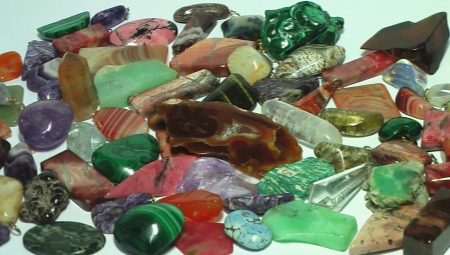The Urals is rightly called the treasury of Russia. This is a malachite box filled with a variety of precious stones.
Description
Mining beautiful Ural stones began a long time ago, since the appearance of the first Russian immigrants. At the end of the 16th century, caravans of goods began to go from Europe to Asia and back, from Solikamsk to Tura and Tyumen. Then iron ore was discovered, followed by patterned ornamental stones - agate and jasper. Mention of them first appears in the XVII century.
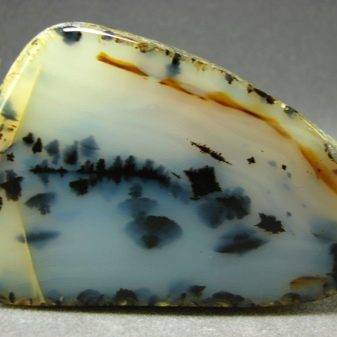
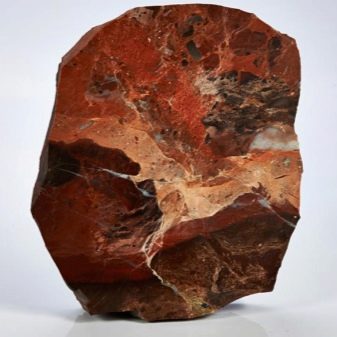
At that time, mining was carried out in a artisanal way, excavations were carried out with a pick and a shovel. Pits, pits and adits were almost not strengthened by anything, and the work posed a danger not only to health, but even to life. Often, beautiful gems were found simply on the surface of the earth, along the banks of rivers and streams, plowed during the processing of gardens. Miners miners at first simply sold rough stones to resellers. But gradually masters began to appear, learning to cut, make original caskets, jewelry, and souvenirs.
Almost all minerals of interest to jewelers are found in the Ural deposits, and in large quantities. Some of them are found only in this area.

In the science of mineralogy there is such a term as "the semiprecious strip of the Urals." This is the territory of occurrence of precious, semiprecious and ornamental stones, located on the eastern slope of the Ural Mountains. Its length from north to south is approximately 100 kilometers. At a professional level, the gems of the Urals began to be studied only at the end of the 19th century.
Deposits and Production
The first and largest field at that time was the Murzinka settlement.It was here that in 1668 the Tumashev brothers found the first precious stones. From that moment, the life of the settlement changed radically. Residents of nearby villages began to extract gems. Prospectors from other places began to come here, the village grew.

Stone business was further developed during the reign of Peter the Great. He issued a decree according to which anyone could search for and extract minerals anywhere, thanks to which many plants appeared in the Urals. At the same time, the construction of St. Petersburg was started. For the construction and decoration of buildings and palaces, more and more different types of stone were required, as well as craftsmen who could process it. Mining specialists began to be sent to the Urals in order to organize mining on the right scale.
Over the 200-year history of development, hundreds of tons of beautiful gems and semiprecious stones - topazes, beryls, alexandrites and many others were exported from the Murzinsky mines.
The Southern Urals is also the place of extraction of beautiful translucent amethysts.
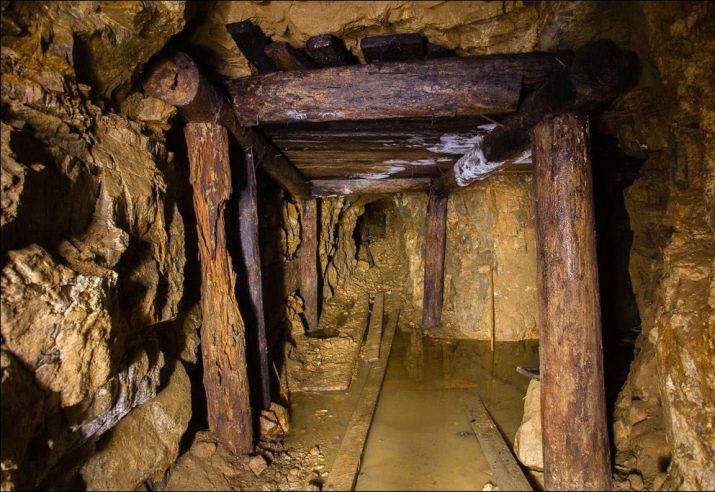
Another famous deposit is Malyshevskoye. Valuable emeralds of tremendous beauty are mined here. Operated to the present. In 1993, a crystal weighing 1.2 kilograms was mined at this mine, and in 2013 - a mass of just over one kilogram.
The pride of the Urals, one might say, a visiting card, for many years is malachite. From the beginning of the 18th and the 19th centuries, this stone was mined on a massive scale. Malachite was used for the manufacture of caskets, countertops, vases, wall mosaics, and various small souvenirs. It was sold abroad. For example, in Versailles there are apartments decorated with polished plates of this stone.


In the folklore of the Ural miners and prospectors, there were such images as the Copper Mountain and its Mistress, who was the owner of underground treasures and could help an honest hard worker in their search.
The largest in terms of malachite production was the Gumoshevsky mine.
Kyshtym, Tagil and Mednorudyans were also famous. Now explored deposits of malachite are almost completely developed, only in some places you can still find small-sized samples. However, some scientists, geologists and mineralogists are sure that in the bowels of the Urals there are many untouched reserves of this amazing stone. So the search continues, and perhaps there will be another era of malachite abundance.
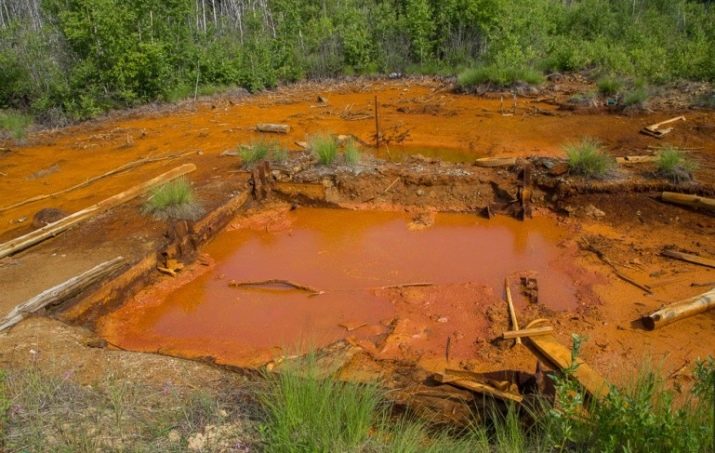
Kinds
In the Urals, a variety of minerals are found. The list can include the following natural precious and semiprecious stones.
- Alexandrite. Closes the five most expensive and rare gems in the world. Its distinguishing feature is the color change from green in natural light to reddish in artificial. The name received in honor of the Russian Emperor Alexander II. At present, the alexandrite deposit in the Urals is considered developed, stone mining is not performed.
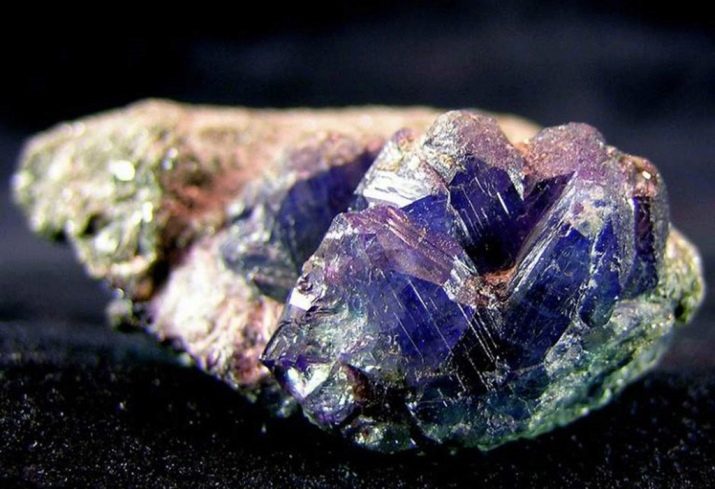
- Amethyst. The chemical composition is quartz. It has a purple color, it happens with a reddish tint. It is attractive not only in faceting, but also in the form of raw friends. Ural amethysts abroad are called Siberian.
In terms of beauty, they are rated an order of magnitude higher than Ceylon and Brazilian.
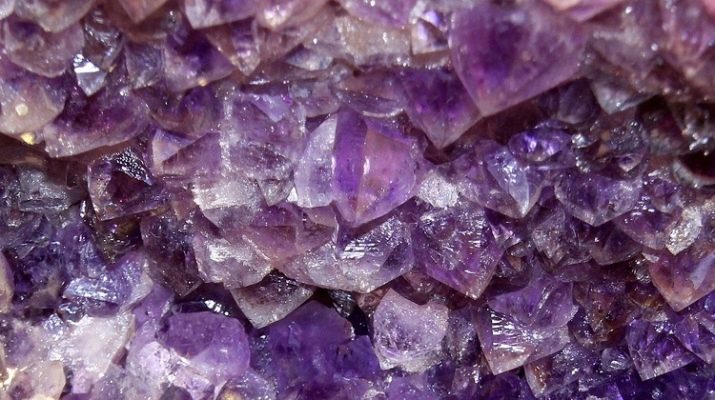
- Emerald. According to mineralogical terminology, it belongs to green beryls. It is a gem of the first group, and also one of the five most expensive of them, occupying an honorable third place. It was first discovered in 1830. Emeralds of the Ural deposits are characterized by the depth and saturation of green.
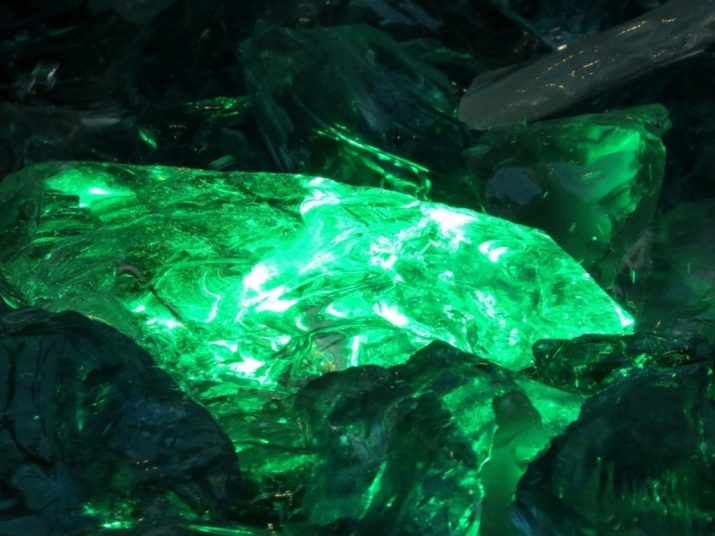
- Topaz. A well-known researcher, mineralogist, academician Alexander Evgenievich Fersman said that Russian topazes stand out for their color and beauty among similar gems from other countries, and they can rightly be called our pride. Stones from different workings vary in color. For example, colorless crystals are found in the Ilmenogorsk belt.The largest had a mass of more than 10 kilograms. Yellow and blue are found in Murzinsky and Aduysky. Raspberry, pink and bluish - in the Southern Urals.
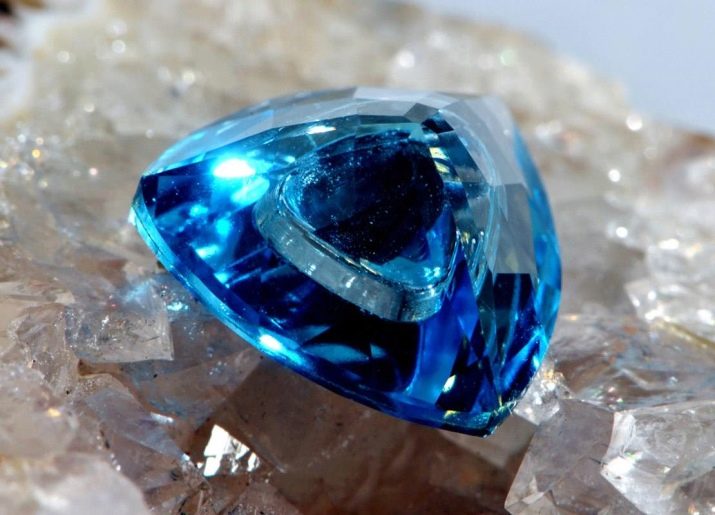
- Demantoid, or green pomegranate. Very rare and most expensive of all known pomegranates. The first stone was found in 1868, in the region of Nizhny Tagil. 6 years later, in 1874, demantoids began to be mined at the Sysert mine. The color of the stones can vary: green, pistachio, yellowish-honey, golden.
The refraction of light rays on demantoids after cutting is comparable to diamonds. They are highly valued throughout the world.
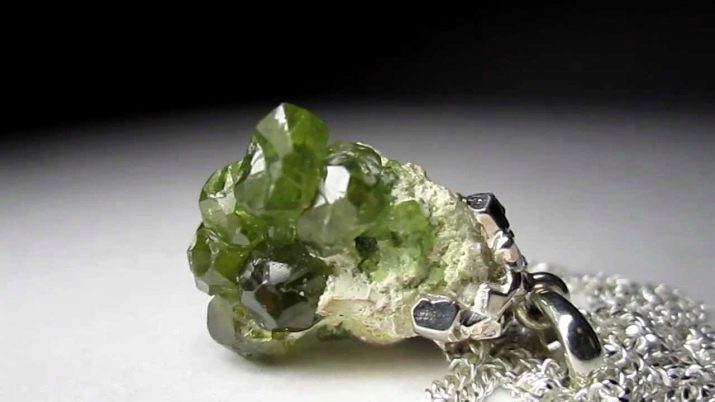
- Diamond. One of the hardest minerals. It happens in different colors. The most common are white, transparent, black, gray. There are specimens with green, brown, yellow, blue and pink tint. Diamonds from the Urals are one of the most expensive.
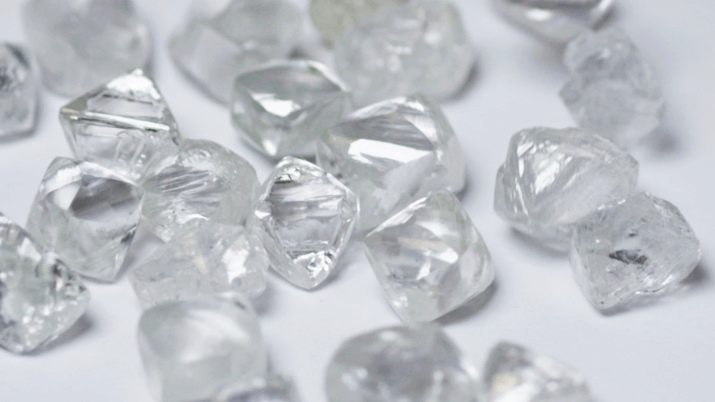
- Mariinsky. The latest find of scientists. In 2011, a mineral was discovered in the Ural Mountains, similar in composition to alexandrite. The stone is green, when the lighting changes, the color does not change.
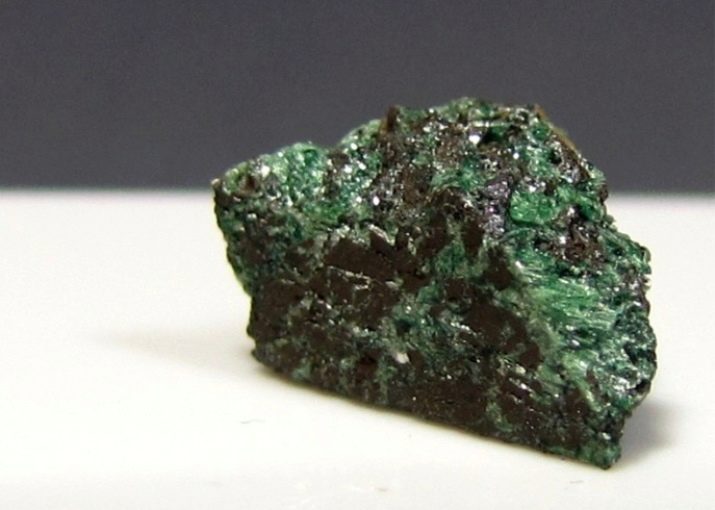
- Aquamarine. It belongs, like the emerald, to the group of beryls. It was first discovered at the end of the 19th century, at the Aduisk deposit, north of Yekaterinburg. It has good transparency and sky blue.
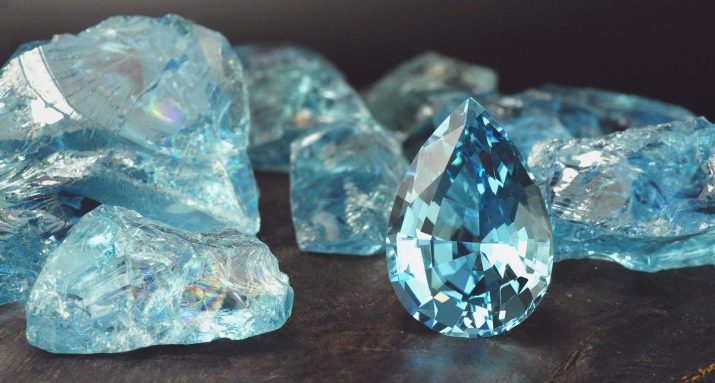
In the Middle Urals, rich deposits of tourmaline, rock crystal, smoky quartz, chrysolites, beryls of various colors and many other beautiful gems of high quality were discovered.
All these minerals are widely used in jewelry.
A separate group is represented by the so-called ornamental stones. They make inexpensive jewelry - pendants, beads, rings, bracelets. As well as various figures, vases, coasters, cigarette cases. The most common are the following.
- Malachite. The most famous Ural stone. Soft, easy to process, it can be sawn, ground, polished. The original gentle drawing on the cut allows you to use it in the manufacture of mosaics, for decorating interiors.
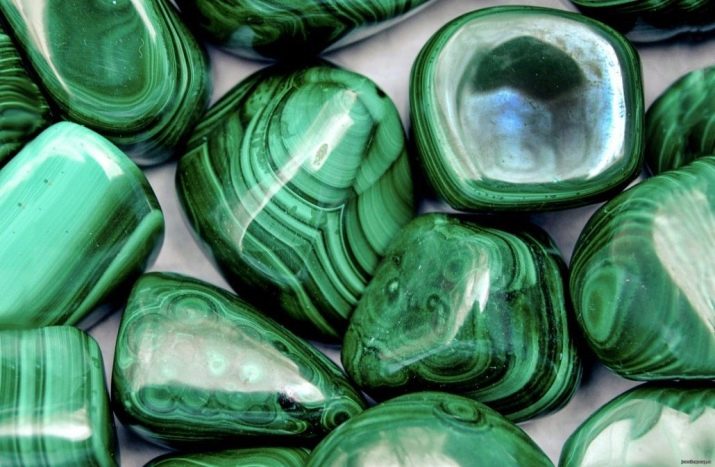
- Orlets, or rhodonite. The Urals has the largest reserves of this variety. The color of the mineral varies from light pink to dark cherry, with a huge variety of shades. Most often, coasters, vases, and candlesticks are made from it.
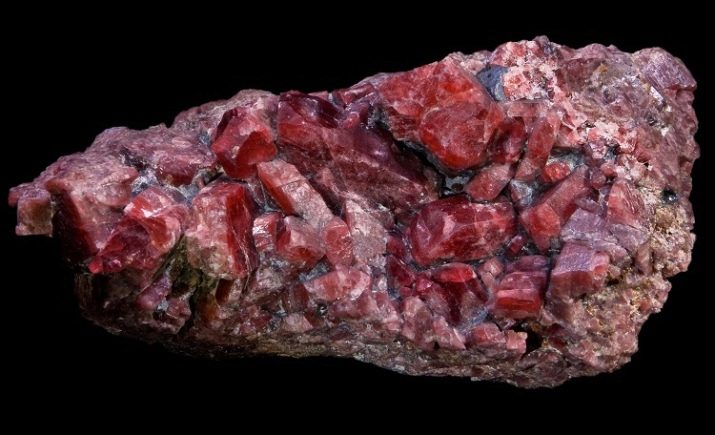
- Jasper. In the Urals, 8 species of this ornamental stone are mined. Especially a lot of it in the southern part, whole rocks from jasper come across. The color scheme is diverse: green, gray, yellow, red shades in the most bizarre combinations and patterns. The mineral is durable, amenable to processing and polishing, and excellent products are obtained from it.
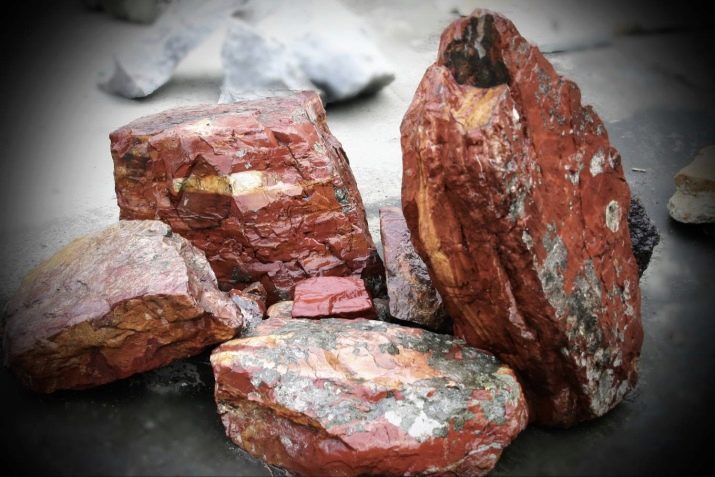
- Serpentine. Stone with a soft structure. The color is dark green with black or brown spots.
It is similar to snake skin, therefore it has a different name - “serpentine”.
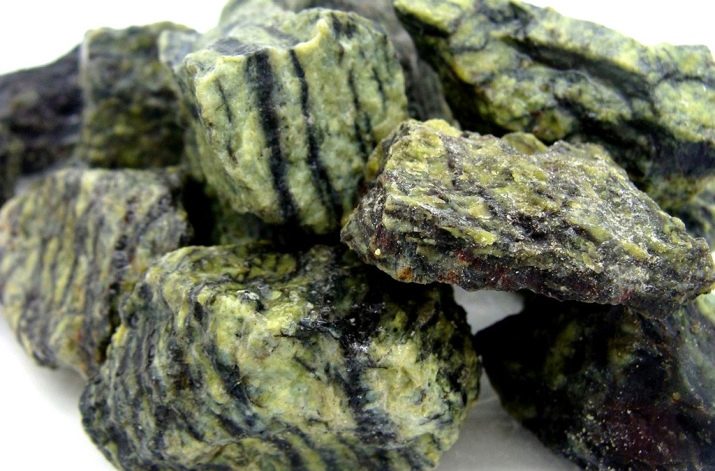
- Pyrites. It has high hardness, but it handles well. The color is yellow-golden, when polished, a shine similar to metal appears.
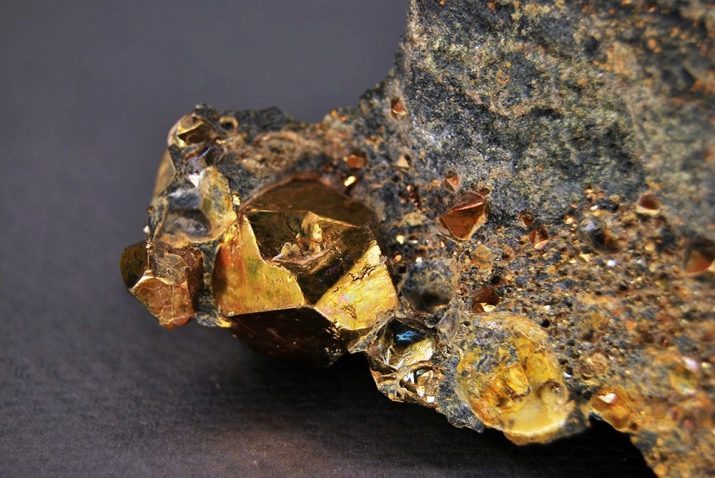
- Chalcedony and its varieties - agate, onyx, cat's eye, carnelian, flywheel. From these minerals make rings, earrings, pendants. The color of the stones can be very different: green, yellow, brown, blue, with many shades.
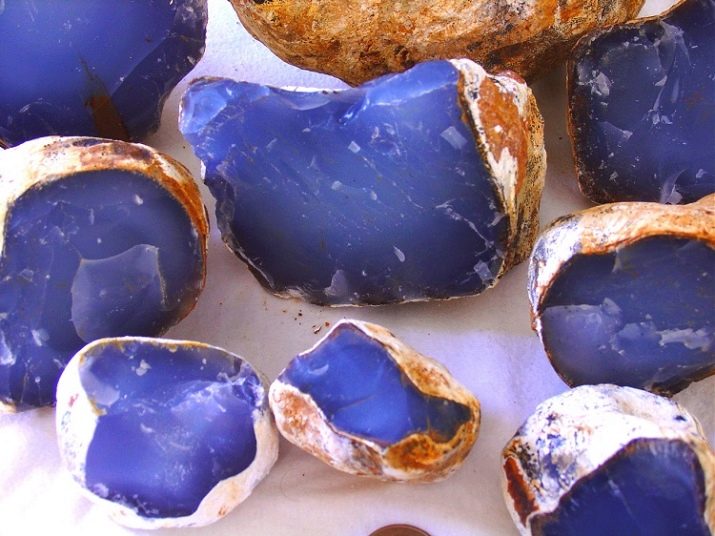
- Nephritis. Greenish gray, bright green, sometimes milky white. Hardness is quite high. Usually used for the production of souvenirs.
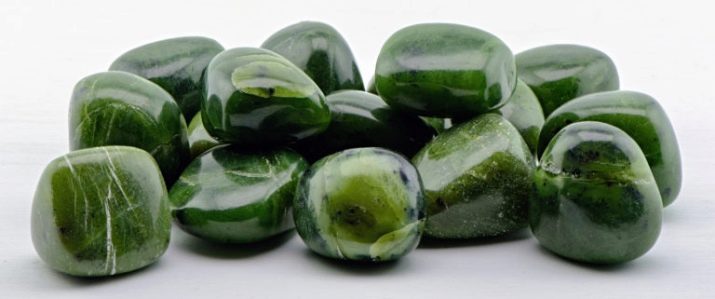
Application
For several centuries, products from the Ural gems have been the pride of Russia. They are widely used in various industries of jewelry and stone-cutting art. The magnificent works of the Ural masters are very much appreciated. Interior items, souvenirs, caskets, jewelry and exclusive jewelry are in great demand not only in our country, but also abroad.
These are they - semiprecious stones of the Urals. Different in color, composition, application, but equally beautiful.
An overview of the Ural gems, see the next video.
